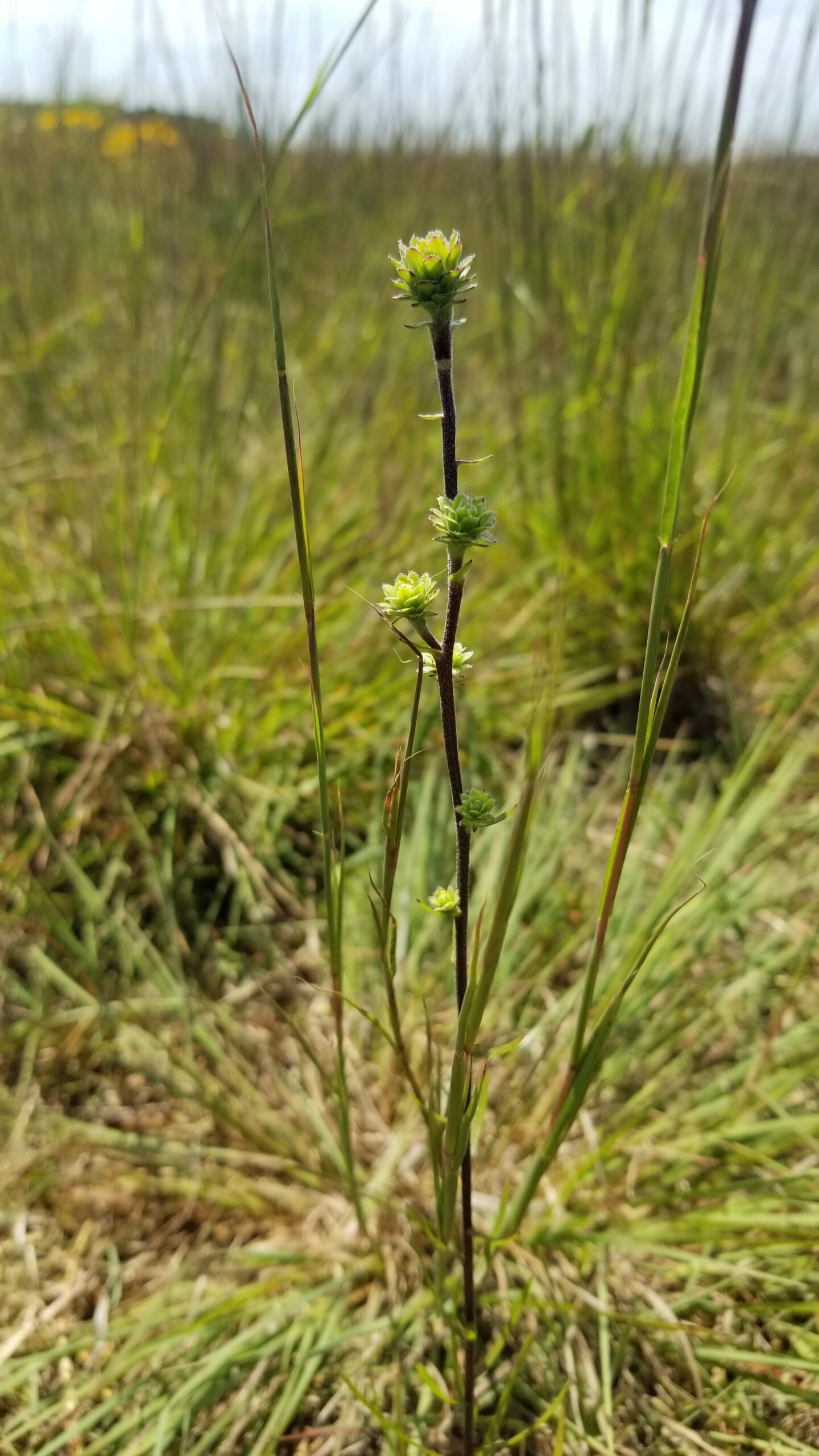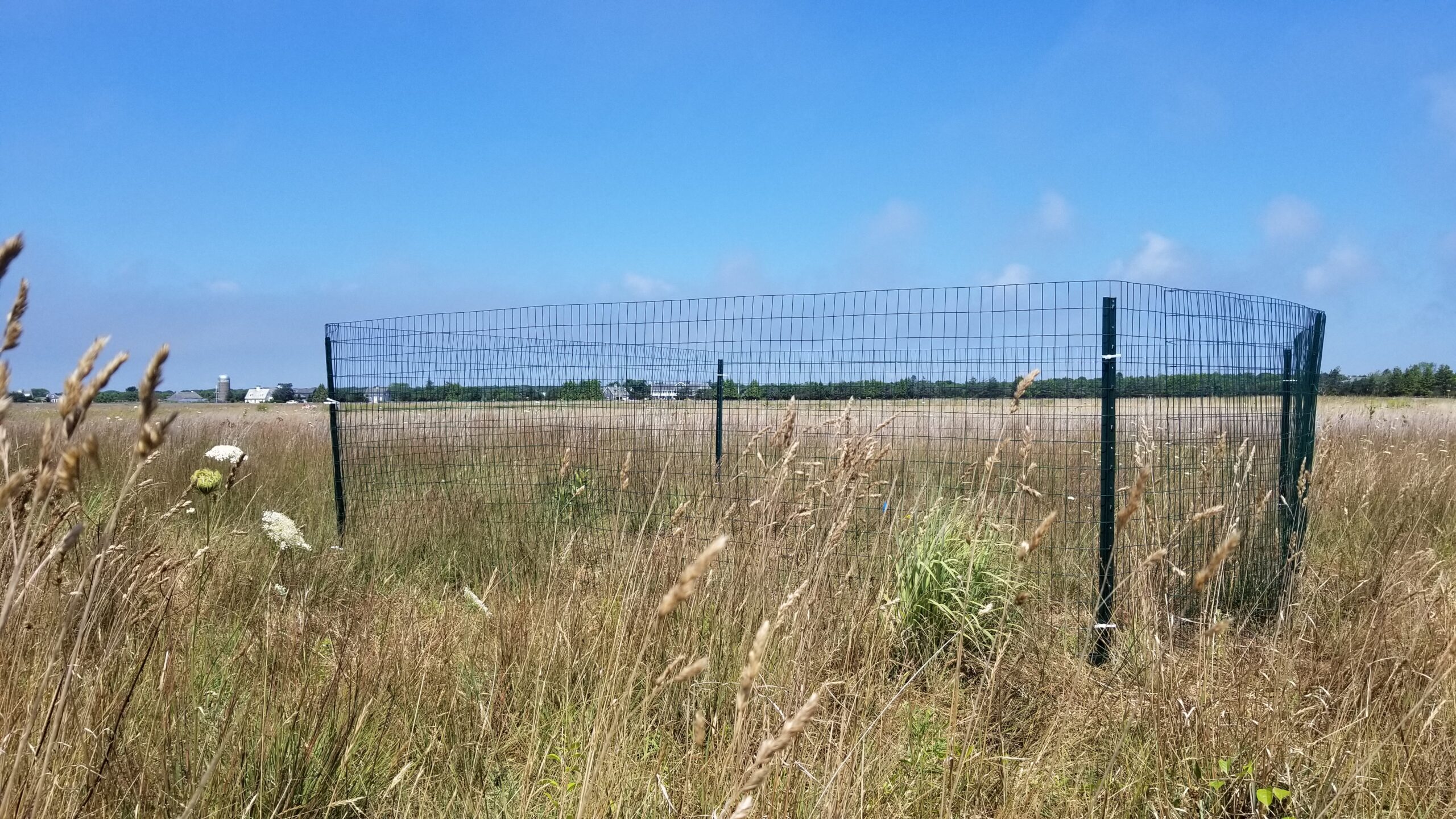This past summer, The Nature Conservancy, with the help of a dedicated crew of volunteers, planted 1,000 New England Blazing Star (Liatris novae-angliae) seedlings at the 60 – acre Bamford Preserve in the Katama Plains area of Martha’s Vineyard. Located in Edgartown, Massachusetts, the Katama Plains is one of the best examples of a sandplain grassland remaining in the world, and the restoration of the Bamford Preserve from agricultural grassland to a diverse sandplain habitat has been a work in progress since the property was purchased by TNC in 2007. In that time, trees have been removed, prescribed burns have been executed, little bluestem grass (Schizachyrium scoparium) seeds have been sown, and other various experiments have been conducted to establish a best practices model for grassland restoration (to read more about these studies, follow the link Resampling at Bamford Preserve on Martha’s Vineyard – Sandplain Grassland Network ).

One of the 1000 Liatris novae-angliae seedlings.
This is the first time that Liatris novae-angliae has been planted at the preserve and the planting event received excellent coverage from local news sources, including radio air time on WBUR. The coverage focused on the impressive size of the planting, the collaboration between TNC and Polly Hill Arboretum (who grew the plants from locally sourced seed), and the significance of this ecosystem, bringing recognition to restoration efforts and raising awareness about the importance of preserving sandplain grasslands.
To listen to the radio program, follow this link:
Planting 1,000 wildflowers to restore a biodiversity hotspot on Martha’s Vineyard | WBUR News
To read the newspaper articles, follow these links:
1,000 rare ‘blazingstars’ planted in Katama – The Martha’s Vineyard Times (mvtimes.com)
This wildflower will help Martha’s Vineyard fight climate change | CAI (capeandislands.org)
The Liatris seedlings were carefully planted by hand at the end of June. Subsequent monitoring visits revealed that by mid-July many of them had been browsed upon by Eastern cottontail rabbits, White-tailed Deer, and/or Meadow Voles, leaving behind headless stalks and in some cases completely uprooted plants. Drought conditions and high heat persisted throughout July and August, and while far from ideal, the vast majority of the seedlings did not show signs of desiccation, illustrating the resilience of this species in its native habitat.
With a few remaining trays of seedlings left over from the June planting, two separate populations were planted with exclosures erected around them. The seedlings within each exclosure fared much better than the unprotected individuals and as of this writing are growing healthily, and flowering for the first time.

Two of these exclosures were erected to protect seedlings from being browsed by deer and rabbits.
Written by: Rich Couse, Stewardship Field Assistant, TNC Cape Cod & Islands
Photos by: Rich Couse

